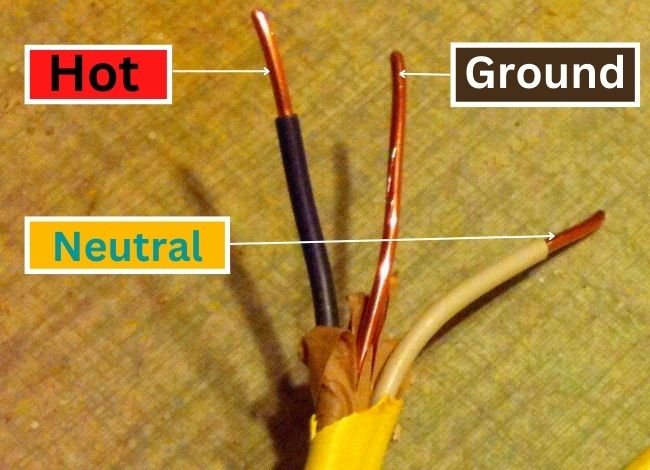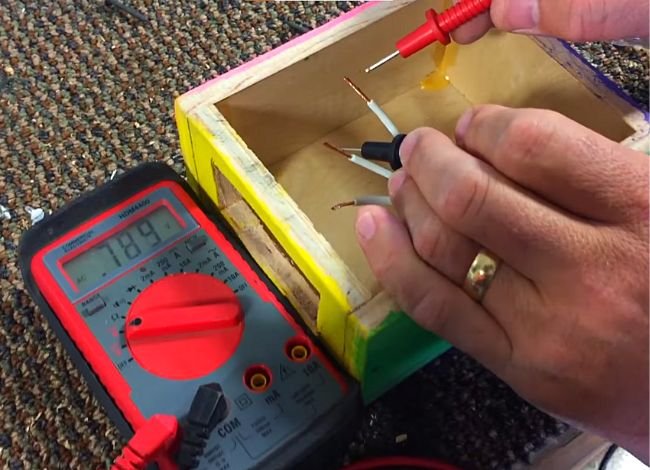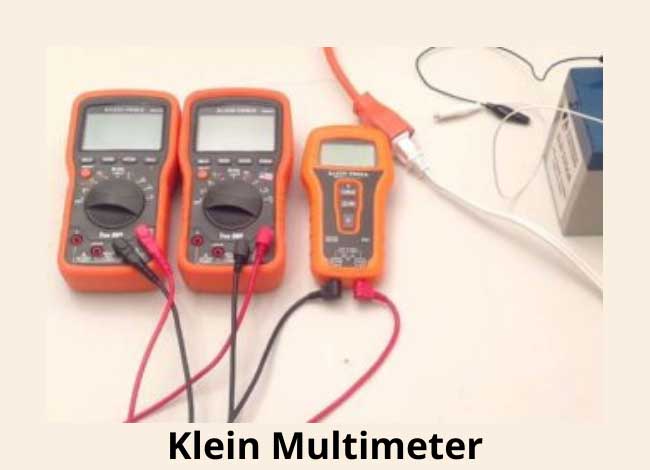Last Updated on October 8, 2022
When performing some repairing works with any of the electrical adjustments, you must know the insides wiring compendiums and the nature of the wires. Identifying the wires is the basic attribute and a vital precondition for repairing these electrical devices. One of the main aspects of doing so is to identify the neutral wire. To serve this purpose, you just need a multimeter. The multimeter can effortlessly check the types of wire by the reading that has been displayed on the multimeter screen.
Multimeters are the trailblazers in testing the electrical readings. Moreover, these are the most proper instruments for checking almost everything, like the resistance, power flow, and voltage. You can also find all the options in this device, like the voltmeter, ammeter, and ohm meter. This informative guideline can play a pivotal role in giving proper instructions on finding a neutral wire.
How does the neutral wire work?
As we advance to the main proceedings of the neutral wire, we need to know how this wire operates. There are mainly their types of wires, and each of them has a different working mechanism.
The neutral wire mainly works on the basis of the flow of the current and the path where any electricity goes. The AC power systems operate on the basis of the neutral wire. It is the loop where the electricity travels onward. If the machine is agitated with an external power supply system, then there is no other way but to intensify the main electrical system.
The positive, negative, and neutral wires are interconnected with each other, and The electrical current must be paying off a simultaneous altering effect to make that an inevitable corresponding. Before starting the process, ensure that the wire is detached from the power source. All three wires must inevitably be present in the system. In some cases, it requires only the position and negative wires, and they do not have the ground wire. But this is too risky as there is ample chance of a short circuit. Even blazing may also happen.
If the neutral wire is damaged, then it can cause deleterious consequences as it attenuates the excess flow of current through the wires. If the negative side is best, then the positive wire can find any alternative return path available. Then the neutral wire soaks all the extra current that can impede the short circuit.
The significance of the neutral wire
The neutral wire is an uncompromised part of any electrical wiring system. The significance that it bears is such a gem.
- The Open neutral wires have a strong wire link with the other two points. In this case, the system needs a disconnected system that is very much associated with the inconsistency of the current flow.
- The neutral wire is an important part of the three-phase supply, getting the phase voltage in a surmountable path. The phase reversing voltage between the single line terminal and the neutral terminal is interconnected. The neutral wire is attached directly to the earth to balance the entire electrical system.
- The neutral wire plays a significant role in measuring the voltage of the individual detachable windings inside the main alternator. The single-phase supply manages to complete the circuit, and it can measure the voltage relative to the winding alternation.
- The transmission, generation, maintenance, and distribution of the electrical power system are interconnected with the three-phase system. The neutral wire establishes a backup system for the three-phase system.
- The most amount of electrical generation power at the station is really the result of the thermal power station and hydropower stations. That’s why the neutral wire is called the protector of the three-phase alternator.
How to tell if it is a neutral wire?
There are some ways of identifying the neutral wire. Generally, the Black wires are called the hot wire, and the white wires are named neutral wires. And the left one is called the earth wire. The earth wire is covered with a green or yellow colored wire. The neutral wire, with contact with the other wires, can flow some current.
The neutral wire under load takes away current. It is attached with an underload neutral bus bar. You can also have some white and gray wires in the system, and they are mainly attached to the grounding terminal in the outlet box. The electrical panel can control all these ground bus bars. They paved the way for the grounding of the circuit current.
In case of checking the neutral wiring, introduce a non-contact voltage tester. The tester can be very effective in measuring all the readings of the neutral wire. Sometimes people get confused between the ground wire and the hot wire. After you have identified these two, the left one is the neutral wire. Every time this wire is coated with a white wire. That is the main factor in identifying the neutral wire.
What are the types of wires?
At the very first stage, we need to gather proper knowledge about the Types of wires. If you cannot check the types of wires, you cannot perform the repair work. And here we will discuss all types of wires. 
Neutral Wire
The neutral wire is the easiest to detect among the three types of wires as it is always covered with a white wire coating. The neutral wire carries the current with the natural flow of the original power source. Neutral wire works in this aspect.
The neutral wire brings the prime circuit to the ground. The electrical panel is also related to the main neutral circuit. The current circulation through the electrical system has gone out of miles. The maximum utilization through the neutral wire can prevent faulty currents from flowing to the outlet, and the electrical device’s circuit must be coherent between the core speculation.
Once the hot wire bounced back at the beginning of the circuit, the other wires also got triggered. Additionally, the Neutral wires can be identified by the white casing. It is not always true that the Neutral wires circulate an electrical current, but most of the time, it happens. So be cautious while diagnosing this wire.
Hot Wire
The Hotwire must be the main type of wiring inside any electrical system. The initial power feed starts with these wirings, and If this does not happen, then you might be more adventurous in initiating the basic flow of the current. The wire basically carries the current from the power source to the main outlet. This also acts as the heart of the circuit as it can pass electricity in a heavy dimension. This wire is dangerous to touch a hot wire while a power source is attached to the device. So you can use a rubber glove while performing the repair.
The main identification point of the hot wire is its black casing. This is the prime color of hot wire most of the time. If you see other color casings like the be red, blue, or yellow, that would be the ground wire. Always avoid touching hot wire if it is connected with the operating power source. This is the most powerful wiring type of them all. So handle this with extra care.
Ground Wire
The last but not the least type of wiring is the Ground Wire. The ground wire acts as a defensive module against perilous electrical settlements. The ground wire may not carry any current, but in some cases, it plays a life-saving knock.
When a short circuit occurs, the ground wire diminishes the unstable current away from the electrical system and directly sends it to the earth. For that, it is also called the earthing wire.
If Any electrical accident happens, then the wire that attenuates it is the ground wire. The green casing can identify it. All homes must have an eating wire as it works the shield against any sort of thunderbolt. It is, after all, a requirement by the NEC for newly-built homes. Check the outlets to ensure that your house has a ground wire. If the outlets have three rigorous prongs, then the ground wire is present at home. Suppose there are only two prongs. Then the ground wire is missing. Having a ground wire adds an extra layer of protection against any sort of disaster.
What are the Differences Between a Neutral Wire and Hot Wire?
There are noticeable Differences Between a Neutral Wire and Hot Wire. Naturally, the white stripe is called the neutral wire. It is the return outgoing path for the current. There must be a conductor of electricity to fulfill a circuit’s criteria. When two wires carry any electric current, the electrons present in the wire agitate. The electrical current cannot make a material conductor unless it has a path of least resistance.
An incomplete or broken circuit cannot pass the electrons, so the neutral wire comes in the process. A reverse break in continuity may be nonexistent for the no voltage difference. The ground or earthing shows zero volts if there is no current passing inside it. The hot wires are coated with a black coating, but the Neutral Wires are covered with a white coating. Different companies may use different colors and textures to make the difference between them.
A multimeter can play a vital role in testing circuits, rewiring, or fixing devices. You can check the wires by seeing the color difference. It is important to know which wire is which. Some wires are not depicted clearly, and that leads to a dire accident. The positive or negative must be disguised in a decent manner.
How to detect neutral wire in a 3-way switch?
The 3-way switch is a much common formation around the world. If we don’t understand the basics, then it will be a disaster to have a smooth circulation of electricity.
A more inclusive way to identify a 3-way switch is to have different buttons for each wire. The button and counting number of screw terminals can be harmonious in some cases, but most of the time, they are not. The three terminal screws having a ground screw have nothing to do with the electrical system as it is for earthing purposes.
In a 3-way switching system, the arrangement of these screws migrates upon the switch manufacturer brands. There are two traveler screws in the main switch body. The standard screw has been detached from the other switches. The traveler screws include an opposite controller module that correlates deeply with the common screw. The hot terminal wires are nothing but a pair of subsidies used in the current’s main portfolio.
Two of the terminals are copper and bronze-made materials so that they can pass current in two different measurements. The single dark-colored screw can be termed the common terminal, and the green one is the ground screw.
The hot wire is labeled with black or red tape so that it is ready to initiate the memorandum. If a terminal wire is white, it must be a neutral one. The other wires in a circuit are bare copper or green wires. The neutral wire is labeled as the 3-way controlling light fixture. The base is attached to the ground terminal on each switch.
How to identify neutral wire with a multimeter?
The process of detecting a neutral wire with a multimeter is a very straightforward process. Just apply the multimeter and get the readings. Then match that with the standard values of the neutral wire. The entire process is portrayed here with possible steps. 
PHASE-1
The first thing is to bring the electrical system that you want to check. Then introduce the multimeter and set the reading to the null value.
The live wire trespasses the electric current from the main power source to the intense loading module. Inspect the propulsion system and the live wire voltage if the neutral wire restores the divulging energy. The device’s power system must have been attached to a rigorous electrical system.
The loop that has been duplicating the neutral wire voltage can also be attenuated by electrical elements like new bulbs and sockets. Then Identify the electrical conjugation with visual checking of the colors of the wire coatings.
PHASE-2
Measure the voltage while it is connected to a plug socket. Two leads are inserted into the socket’s neutral impending. Then Inspect the multimeter’s compulsive reading. You can apply the multimeter to examine the neutral line voltage. The leads must be plugged into the ground terminal so that any excessive current can pass through the whole system. The left port is being used to maximize the devaluation checking. The voltage reading must not be zero or near zero, others where the wire seems to be detected. Check the socket if it is connected decently.
PHASE-3
Unscrew the switch in case of exposed terminals. Attach the multimeter lead to the ground wire for having a consultant voltage reading. The voltage of live wires must also be encountered while having neutral readings. The radiator metal pipe must connect with each wire’s voltage. Handle the exposed wires with great virility.
PHASE-4
Then, apply the red probe to test the neutral wire. Then link the multimeter between the two wires and check the supply voltage. After identifying the hot wire now, it is time to solve the mystery of the other two. The remaining two wires are more or less the same in nature. The wire which gives the higher reading is the neutral wire, and the other wire is the ground wire, undoubtedly. After Estimating the Results, now evaluate the dimensions. If you get a null reading on the multimeter, then the socket may have been damaged. Most of the time, it shows the 120V or 240V, and yes, that is the neutral wire.
What safety precautions must you take while testing a neutral wire?
You need to Assess the environment while taking the measurement. Personal protective equipment can rescue your life in any unwanted situation, and any hazardous measure must have cohabited in any case of delinquencies.
There are other ways to determine polarity, and you don’t need a multimeter to do that. If the multimeter signal is illuminated, there is current passing through the entire body. If it is not illuminated, negative energy surrounds the whole body. Using a battery can reduce the chance of being caught by the current.
The two wires system is capable of leading the multimeter in a position that can attenuate the formal attributes. Arrange a wooden log before doing the measurement, and if you are caught by the current, then it will pass the current in the ground. There are some safety precautions needed before testing a neutral wire. Use rubber hands, gloves, and anti-flaming goggles.
Summing up
The neutral wire is recognized as a main variable in the current module. The neutral and hot wires have harmonies in relation to the protected equipment. The neutral wire can assist in ensuring the power system architecture.
If you are on the way to checking hot wires or ground wires, you need to check the neutral wire also. A multimeter is the best way of recognizing this wire. It would be best if you implement a multimeter to check the neutral wire. Follow this article to fulfill the aspect of checking the wires. But before checking, take precautions as it is very much dangerous to work with a multimeter.




